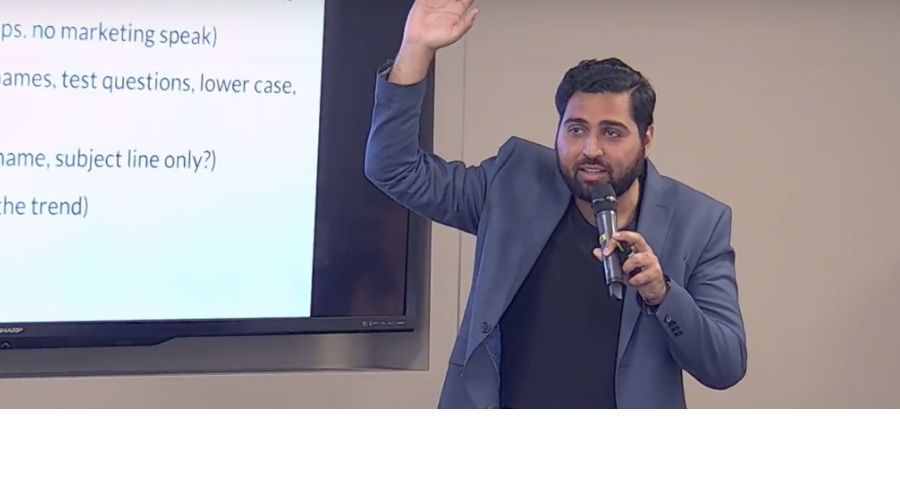
It might seem strange to read the title of this panel at first glance: all of the participants are male, but they’re talking about how gender diversity leads to success and profit? We actually have several concrete reasons for how an all-male group makes a difference.
Last year, we surveyed our women members at Founders Network, which proudly boasts 30% higher than the national average of women founders. Led by founder Amy Wister, one of the main issues fnWomen wanted to explore was bringing men into the conversation. Women wanted to help leverage our male counterparts as champions of women in the workplace. With Founders Network having a mixed-gender group of founders, this was a natural fit. In addition, women wanted to work together to help create a more inclusive workplace culture across companies.
The fnSisterhood realized that moving women founders forward was not just up to women, but it was also up to men.
About the Panelists
Josh Krammes
For this panel, we were privileged to have Josh Krammes, head of Community Engagement at Stackpath. Josh is also an advisor, mentor and investor of early-stage startups. He helps startups in the growth stage understand who they are, as well as helping enterprise partners understand what these startups can do.
Josh has worked with private corporations, political groups, NGOs and as an entrepreneur with a billion-dollar exit. He focuses on business strategy and development, fundraising, mentoring and community development. Some of the many startups he has advised include HelloHome, Sparked.com, Keen.io and Cloudability.
John Lyotier
John Lyotier is one of the co-founders of Left Technologies, Inc. in Canada. He’s also a co-founder of RightMesh AG in Switzerland. He brings with him a 20-year career in enterprise software and marketing. He’s proudest of having built a workplace culture that is consistently recognized as one of the best workplaces for their work/life balance. It is also recognized as one of Deloitte’s Technology Fast 50 Companies.
Left Technologies helps foster the growth of projects that make a lasting impact on the world. At its core, Left Technologies is centered around automated demand generation. Their platform, Left Travel, uses big data and advertising technology to help improve and influence the international travel experience.
Jags Krishnamurthy
Jags Krishnamurthy is the CEO of Object Edge and is passionate about technology. He has worked extensively in developing e-commerce personalization and video-commerce technologies. Jags is also a proponent of gender diversity and is an avid supporter of and mentor to Girls Who Code to encourage more women in technology.
Now, it’s time to ask our speakers the kinds of gender diversity questions that make them and their respective companies such leaders in this space.
With a diversity of backgrounds and companies, one of the commonalities these men bring together is their belief in having more women at the table.
How Do You Build a Gender-Diverse Team?
Jags at Object Edge found that internships within the local community were a great way to give back. In doing so, he also discovered that internships were an ideal way to get fresh, new ideas from outside the company.
Josh and the Stackpath team were very intentional with the way their team was structured. What works for them is purposefully looking for ways to include diversity when they hire. Although the founders are all white men, he and his team look for inspiration from other races, genders and cultures. Nearly half of his management teams and C-level are women or people of color. This, in turn, provides them with various perspectives and viewpoints that enrich the workplace, their offerings and their culture.
John created his diverse Left.io team in a way that wasn’t expected. He had read the book, Lean In, by Sheryl Sandberg, and it states that “men are hired on potential and women are hired on experience.” John realized that his company was viewing potential candidates with two different lenses, and they were missing out on a lot of promising female candidates. After some deep “soul searching,” Left.io made “potential” one of his key hiring criteria for all genders.
As a result, they started hiring based on certain traits, like humility and diversity of thought. This gave them a wealth of perspectives to draw upon and created more workplace diversity, product enhancement and cultural richness.
How Does a Man Become Involved in Movements Centered Around Women and Technology?
It might seem unusual for men to align themselves with movements that focus on women in technology, but that is exactly what Jags did. He championed the Girls Who Code movement is just one example, but it happened entirely by accident.
In Jags’ case, when his daughter returned from a technology camp, she explained the situation to him about women coders. Although she had learned a lot, she didn’t feel comfortable being surrounded by men all the time. The purpose of the camp, in addition to learning about technologies, was to inspire women to seek out tech careers. As a result, she learned to be more forthright and brave. She realized that her contributions were just as valuable as men’s.
On the suggestion of his daughter that he teach such a class, Jags applied to teach at Girls Who Code, and it was a life-changing experience that has seeped into his work and company.
Josh’s involvement in women and technology is more purposeful. He and the other executives at his company have very intentional and driven conversations about ensuring that the best people and the best technology are given an equal chance.
With John, the impetus to include diversity really came about suddenly. He realized after reading the book Lean In that he couldn’t name a single female in a leadership role that he admired, and that mortified him. To remedy this, he started encouraging his interviewees to tell stories. John believes that stories are a gateway to assessing humility. Telling stories allows people to open up and be vulnerable. In doing so, the company has a more human side to it,which attracts the kind of people and talent that they’re looking for. This has clearly proven itself in the marketplace.
How Has Gender Diversity Changed Your Company?
Jags noticed in his company that having multiple genders at the strategy table has changed things for the better. With having only men at meetings, it can foster a kind of competitive or “bro” culture. With women at the table, there’s much more empathy and listening.
Josh’s previous company had a robust mix of people. The company was global, and when everyone got together, great ideas blossomed. It also created a sort of mindfulness and a need to be present and listen rather than trying to talk over each other.
Josh also made an excellent point in that it’s one thing to say a company is “diverse”, but another to actually walk the walk.
“Diversity,” Josh notes, “is being invited to the party,” whereas “Inclusion is when you’re asked to dance.”
John stated that there are two competing mindsets in the CEO world. The first is “win at all costs.” The second is “everybody wins.” John believes wholeheartedly in the “everybody wins” mindset, because it costs nothing to make everyone come away feeling like a winner.
Women and “A-ha!”Moments
In business and in life, there are those moments where one side can learn something surprising from the other. In John’s case, it was his wife mitigating battles between their kids and making sure that each child feels as if they “won”.
Jags had an intern who was working on a retail fashion website. She was a marvelous designer but, with her perspective, she was also able to blend that design and code in such a way as to draw the attention to the pages. Normally, one doesn’t think in terms of bringing together tech and design. However, this masterful blending really opened Jags’ eyes to the benefits of both, and created better results.
Josh used to work in Detroit, and had a friend who ran a well-known PR agency. One of their clients was a major auto manufacturer. When the senior CEO went to meet with Josh and the PR agency friend, he looked at the woman and asked her to fetch them some coffee. Immediately, Josh knew that this kind of blatant sexism was real. When he started his company, he vowed that his culture would not follow in those same footsteps. Essentially, he became a proponent of “rewiring the system.”
The Bottom Line on Gender and Diversity Leading to Profit
As you can tell from each of the stories here, gender and diversity in the workplace is more than just something that’s “nice to have.” Being intentional about the culture that founders seek and design can yield beneficial results across the spectrum.
These startup CEOs and co-founders are prime examples of diversity leading to greater profits, greater sharing of ideas, and a more well-rounded company culture.
Gender diversity and race diversity in the workplace allows us all to draw from multiple experiences and points of view. It helps to shape the culture we work in and allows us to grow as people. It also allows us to grow as greater parts of a whole. In short, we work better when we give and take from different perspectives, and together these can define and improve us.






